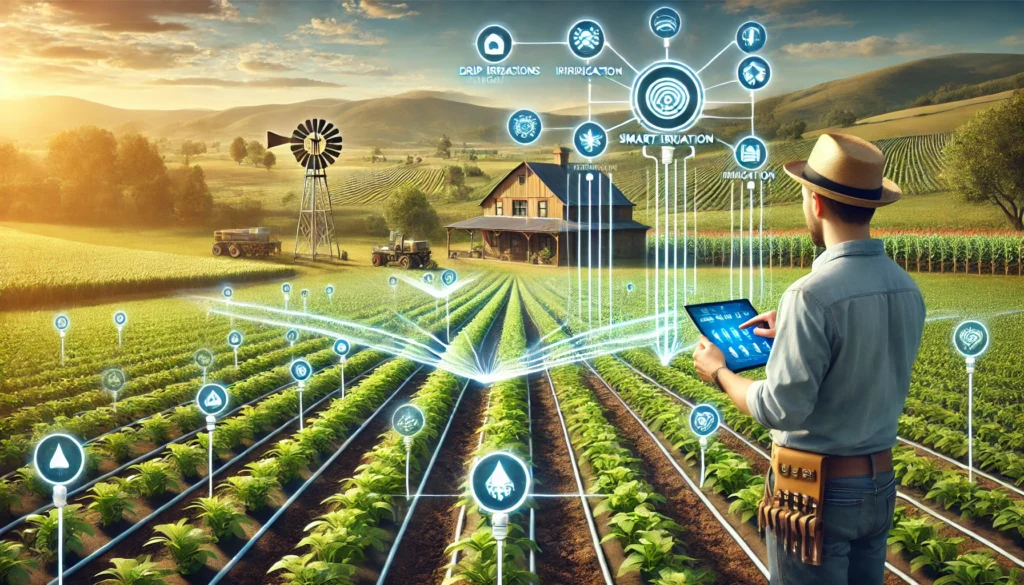Hello everyone! Today, we’re going to discuss an exciting and crucial topic: the role of technology in environmental conservation. With rapid advancements in technology, we have innovative tools at our disposal to protect our planet. Let’s explore how these technologies are making a difference, especially in India.
Introduction
In recent years, the environment has become a central concern for people worldwide. In India, environmental conservation is essential due to our diverse ecosystems and rich biodiversity. The role of technology in environmental conservation has never been more important. From monitoring pollution levels to promoting sustainable practices, technology is helping us tackle environmental challenges in ways we never imagined. In this blog, we will examine how technology supports conservation efforts and its implications for our future.
Monitoring and Managing Air Quality
One of the critical areas where technology plays a vital role is in monitoring air quality. Air pollution is a major issue in many Indian cities, affecting millions of people. Technologies such as air quality sensors and satellite monitoring systems provide real-time data on pollution levels. For example, the Central Pollution Control Board (CPCB) in India uses advanced sensors to monitor air quality across various regions. This data helps in making informed decisions and implementing measures to improve air quality.
Water Conservation and Management
Water scarcity remains a critical issue in various regions of India. Technology offers innovative solutions for water conservation and management. Smart irrigation systems, for instance, use sensors to determine the moisture level in the soil and adjust water usage accordingly. This not only saves water but also ensures that crops receive the right amount of moisture. Companies like Jain Irrigation Systems (a leading agri-business in India) are at the forefront of promoting efficient irrigation technologies.

Wildlife Protection and Monitoring
India is home to a wide variety of wildlife, and protecting these species is crucial for maintaining ecological balance. Technology aids in wildlife conservation through tools like GPS tracking, camera traps, and drones. These technologies help monitor animal movements, prevent poaching, and gather data on wildlife populations. For instance, the Forest Department in Madhya Pradesh uses drones to monitor tiger movements in national parks.
Renewable Energy Solutions
Renewable energy is a cornerstone of sustainable development. India has made remarkable progress in utilizing renewable energy sources like solar and wind power. Technological advancements have made these energy sources more efficient and accessible. For instance, solar panels are being installed in rural areas to offer clean and affordable energy. Companies like Tata Power Solar (a leading solar power company in India) are driving the adoption of solar energy across the country.
Waste Management Innovations
Effective waste management is crucial for minimizing environmental pollution. Technology offers innovative solutions for managing waste more efficiently. For example, waste-to-energy plants convert solid waste into electricity, reducing the burden on landfills and providing a sustainable energy source. The Municipal Corporation of Greater Mumbai (MCGM) has initiated waste-to-energy projects to tackle the city’s waste management issues.
Climate Change Mitigation
Technology is essential in addressing the global challenge of climate change. Sophisticated climate models and data analytics aid in forecasting climate patterns and evaluating potential impacts. This data is crucial for formulating strategies to adapt to and mitigate the effects of climate change. Additionally, technologies like carbon capture and storage (CCS) are being explored to reduce greenhouse gas emissions from industrial processes.
How Technology is Empowering Communities
Technology is not only aiding environmental conservation efforts but also empowering communities to take action. Mobile apps and online platforms provide information on environmental practices, enabling individuals to contribute to conservation efforts. For example, the Swachh Bharat Abhiyan (Clean India Mission) app allows citizens to report littering and track cleanliness drives in their areas. This engagement fosters a sense of responsibility and collective action towards environmental conservation.
The Role of Government and Private Sector
Both the government and private sector play crucial roles in leveraging technology for environmental conservation. Government policies and initiatives encourage the adoption of green technologies. The private sector, on the other hand, drives innovation and invests in sustainable solutions. Collaborative efforts between these sectors are essential for achieving significant progress. For instance, the Indian government’s National Action Plan on Climate Change (NAPCC) outlines strategies to promote sustainable development through technology.
Challenges and Future Prospects
While technology offers numerous benefits for environmental conservation, there are challenges to overcome. High costs, lack of awareness, and technological limitations can hinder widespread adoption. However, continuous research and development and supportive policies can address these challenges. The future of environmental conservation in India looks promising with the integration of advanced technologies.
Conclusion
The role of technology in environmental conservation is irreplaceable. From monitoring air quality to promoting renewable energy, technology is helping us tackle some of the most pressing environmental challenges. By embracing these innovations and working together, we can create a sustainable future for India and the world. Let’s continue to explore and implement technological solutions that protect our planet for generations to come.
Author’s Note
Thank you for reading! I hope this blog has shed light on how technology is driving the future of environmental conservation. Let’s continue to support and adopt these innovations to ensure a healthier and greener planet.
G.C., Ecosociosphere contributor.




